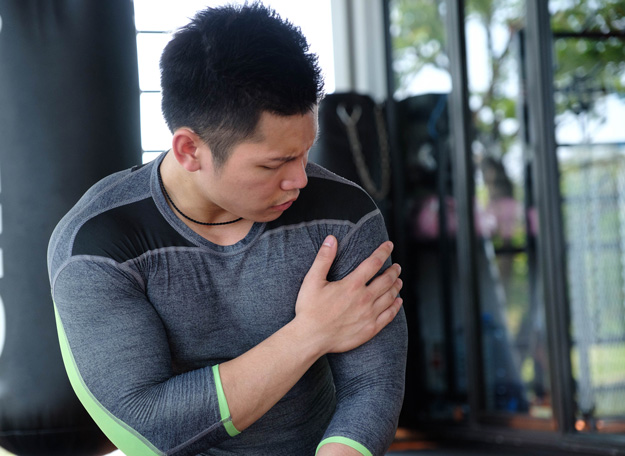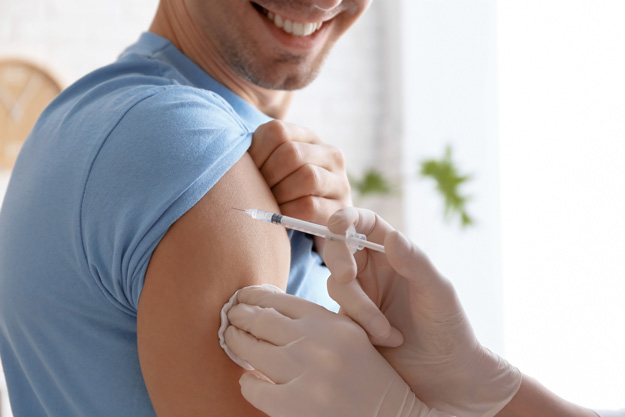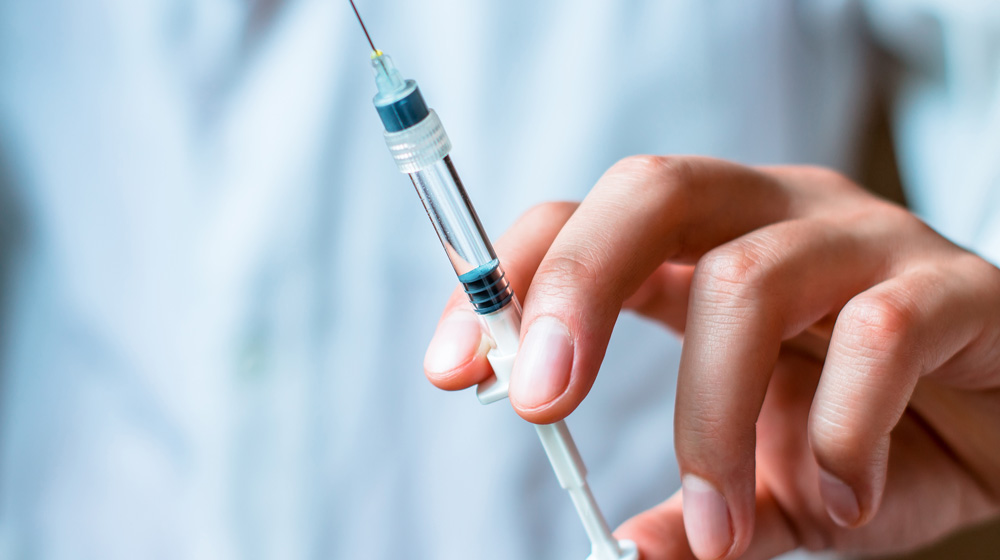Cortisone has been a go-to treatment for conditions marked by pain and inflammation. However, the prolonged use of cortisone raises a big question:
“Are cortisone shots bad for you in the long term?”
Meanwhile, an alternative, safer, and more efficient treatment option for similar conditions is platelet-rich plasma (PRP) therapy.
Read on to learn why cortisone shots are bad for you in the long term and how PRP harnesses the body’s natural healing capabilities, offering a promising path to recovery without the potential drawbacks of cortisone.
Choose Wisely, PRP Therapy Offers Superior Results Over Cortisone Shots
What is Cortisone?
Cortisone is an injectable medication that treats inflammation by suppressing the immune system’s response.
This action reduces redness, pain, swelling, and warmth, providing much-needed relief to individuals suffering from various inflammatory conditions.
Cortisone injections are among the most commonly prescribed treatments in orthopedics and sports medicine, thanks to their remarkable ability to alleviate the symptoms associated with a wide range of conditions, such as:
- Arthritis
- Tendonitis
- Bursitis
- Tennis elbow (lateral epicondylitis)
- Lupus
- Allergic reactions
Is Cortisone a Steroid?

Yes, cortisone is a type of corticosteroid.
Corticosteroids are drugs designed to mimic cortisol, a hormone your body produces. Healthcare providers may refer to corticosteroids as a shorter term “steroids.”
While corticosteroids like cortisone are beneficial for their anti-inflammatory properties, they differ from the anabolic steroids often associated with athletes and bodybuilders.
Anabolic steroids are synthetic versions of the male hormone testosterone, used to promote muscle growth and athletic performance and are often associated with adverse health consequences when misused.
In contrast, cortisone is employed for its anti-inflammatory effects and is vital in treating various medical conditions.
What Does a Cortisone Shot Do?

Cortisone shots are administered directly to the precise location of inflammation. This targeted delivery ensures that an ample dose of the drug reaches the affected area, providing prompt relief from pain and other symptoms of inflammation.
When inflammation occurs in specific regions, such as joints, tendons, or bursae, cortisone injections can be particularly effective in reducing the discomfort and swelling associated with conditions like osteoarthritis, bursitis, or tendonitis.
The anti-inflammatory properties of cortisone shots make them popular for those seeking quick relief from acute or chronic pain due to inflammation.
However, cortisone injections are not a cure for underlying conditions but a tool for managing symptoms and improving the patient’s overall quality of life.
How Often Can You Get a Cortisone Shot?
While cortisone injections can provide significant relief, the frequency of cortisone use must be carefully managed. Overuse of cortisone can lead to side effects on the body, particularly on tissues like cartilage and bone.
Orthopedic surgeons typically recommend limiting cortisone shots to no more than three per year for a body part. This cautious approach minimizes the risk of long-term complications.
Exceptions to this rule may be made on a case-by-case basis, depending on the patient’s condition and the potential benefits versus risks of cortisone overuse.
Common Cortisone Shot Side Effects

Cortisone injections are not without side effects. Cortisone side effects can vary in severity and duration, depending on factors such as the individual’s overall health, the treated condition, and the frequency of cortisone injections.
Common side effects of cortisone shots may include:
- Pain or discomfort at the injection site
- Temporary flushing or redness of the skin
- Localized swelling or bruising
- Changes in skin pigmentation at the injection site
- Tendon weakening or rupture (especially with repeated injections)
- Elevated blood sugar levels
Why Cortisone Shots Are Bad for You
When used excessively, cortisone injections can adversely affect the body. Overuse of cortisone can harm various bodily tissues, including bones, nerves, and skin.
One notable concern is the risk of tendon weakening and rupture, which becomes more likely with repeated cortisone injections. This concern is particularly valid for cortisone injections around the Achilles tendon, a critical structure in the lower leg.
Overusing cortisone in this region can soften the tendon and eventual rupture, necessitating surgical intervention and a prolonged recovery period.
This concern is significant for young athletes who may receive high-dose cortisone shots to “keep them in the game” after an injury.
What is PRP Therapy? How Does It Work?

Platelet-rich plasma (PRP) therapy is a cutting-edge form of regenerative medicine that harnesses the potential of platelets (small colorless cell fragments found in the blood) to stimulate and facilitate the body’s natural healing processes.
PRP is obtained by drawing a small sample of the patient’s blood and then processing it in a centrifuge to concentrate the platelets and their associated growth factors.
According to research, PRP therapy works through several mechanisms:
- Growth Factors: PRP is rich in growth factors that promote cellular anabolism, encouraging tissue repair and regeneration. These growth factors also enhance the release of inflammatory mediators and modulators that exert anti-inflammatory and analgesic effects, relieving pain and inflammation.
- Tissue Regeneration: PRP can initiate tissue regeneration by inducing collagen production and extracellular matrix components. This regenerative process is particularly beneficial for conditions like osteoarthritis and damaged tendons.
- Stem Cell Recruitment: PRP therapy may increase the number of stem cells at the treatment site. Stem cells have the remarkable ability to differentiate into various cell types, facilitating tissue repair and regeneration.
- Angiogenesis: PRP with growth factors can stimulate angiogenesis (forming new blood vessels). This effect helps improve blood supply to the treated area, further supporting the healing process.
- Inhibition of Catabolic Processes: PRP therapy inhibits catabolic enzymes and cytokines, which can cause tissue breakdown and inflammation.
PRP Therapy Vs. Cortisone Injection
PRP therapy and cortisone injections are both medical interventions used to manage pain and inflammation, but they differ in several key ways:
| PRP Therapy | Cortisone Injection |
| Pros:
✅ Natural and autologous, using the patient’s blood. ✅ Promotes tissue regeneration and healing. ✅ Long-term pain relief. ✅ May reduce the need for surgical intervention. ✅ Minimal side effects or risks. |
Pros:
✅ Provides rapid and potent anti-inflammatory effects. ✅ Immediate pain relief. ✅ Often covered by insurance. ✅ Less invasive and time-consuming. |
| Cons:
❌ May require multiple sessions. ❌ Relatively higher cost. ❌ Gradual onset of relief. |
Cons:
❌ Provide short-term relief. ❌ Can weaken tissues with repeated, long-term use. ❌ Potential side effects, including tendon weakening. |
Can You Take Cortisone After PRP Therapy?

Yes, cortisone injections can be administered after PRP therapy.
This approach can be helpful in cases where cortisone’s immediate anti-inflammatory effects are necessary, such as managing severe pain or inflammation.
By using cortisone after PRP therapy, healthcare providers can offer a complementary treatment plan that leverages the benefits of both approaches.
Will a Cortisone Shot Mess With PRP Therapy?
According to a study published in The American Journal of Sports Medicine, combining PRP therapy with cortisone injections can be a safe and effective treatment strategy.
This research found that PRP, when used with a corticosteroid like cortisone, does not interfere with the anti-inflammatory effects of the corticosteroid on treated tissues, such as degenerative rotator cuff tears. This combination approach can even help avoid corticosteroids’ potentially harmful side effects.
Therefore, PRP therapy can be helpful in cortisone treatment for pain-related conditions. Using PRP and cortisone together can enhance pain relief while minimizing the risks of corticosteroid overuse, such as tissue weakening or damage.
References
Jo C. et al. (2017). Effects of Platelet-Rich Plasma With Concomitant Use of a Corticosteroid on Tenocytes From Degenerative Rotator Cuff Tears in Interleukin 1β–Induced Tendinopathic Conditions—The American Journal of Sports Medicine.
Thu A. (2022). The Use of Platelet-rich Plasma in Management of Musculoskeletal Pain: A Narrative Review. Journal of Yeungnam Medical Science.

